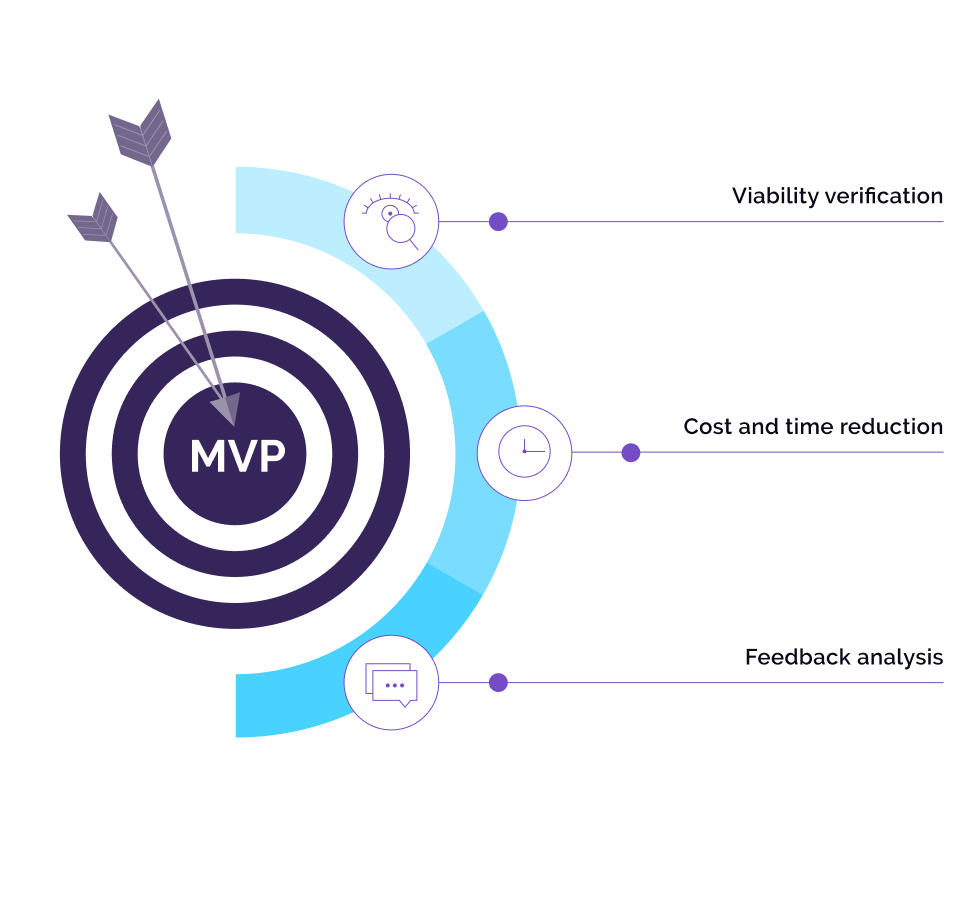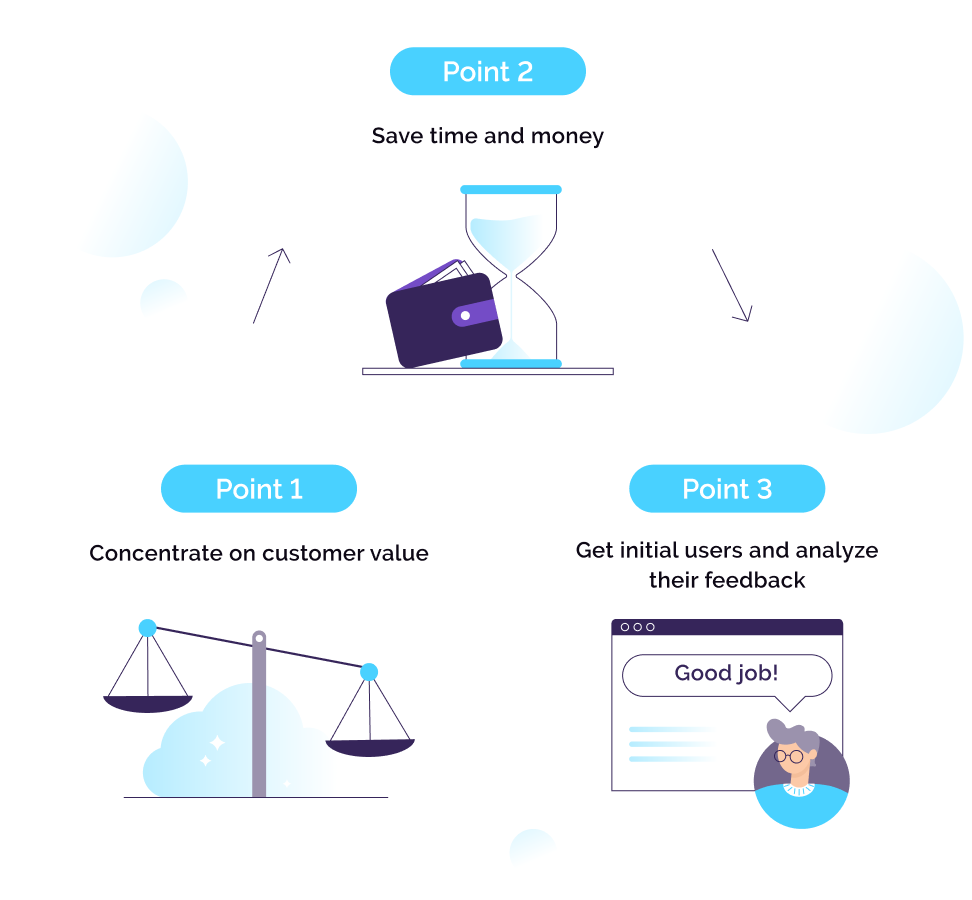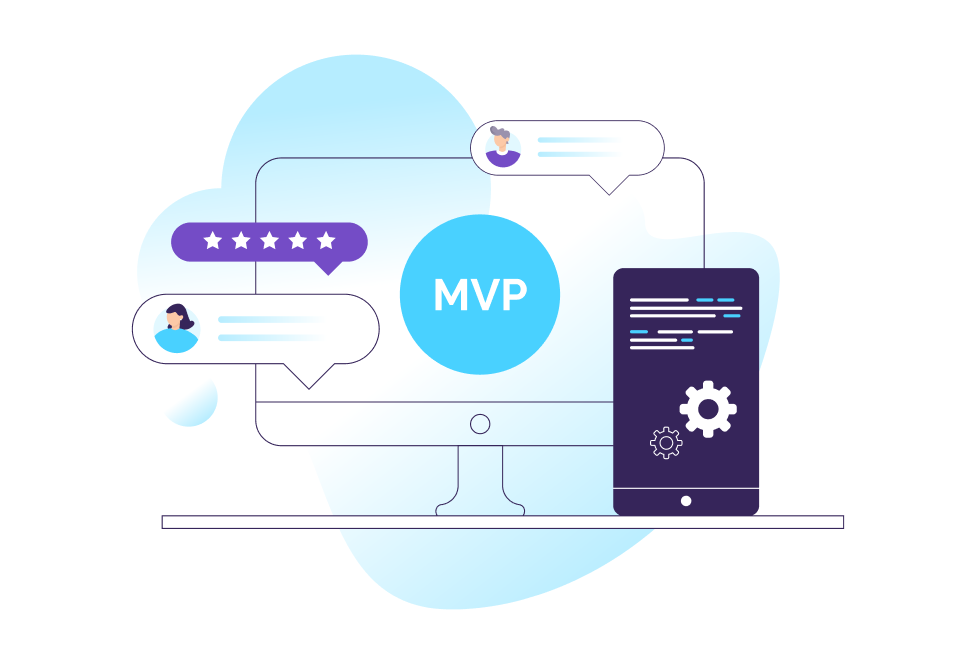In a software world, an MVP became a very popular and effective instrument for launching new products. To ensure a minimum viable product of a high quality, Appservice provides the customers with the most effective MVP service solutions during all stages of development.
Why is a Minimum Viable Product Important for Software Development Projects?
What is an MVP?
Creation of a Minimum Viable Product (MVP) is the easiest way to prove the viability of a business idea. It is a simple version of a new product that includes just essential features to meet the needs of early adopters. An MVP enables companies to start a product faster with fewer expenses, making improvements after gathering user feedback.
There are 3 main objectives of an MVP:

- Viability verification. An MVP defines if the product you offer meets market and user demands before the final solution is released.
- Cost and time reduction. Focusing only on core product features, this approach enables introducing a product quickly with fewer efforts, allowing developers to make adjustments step-by-step.
- Feedback analysis. When the final product must satisfy all users, an MVP is built for early adopters only, thus gathering feedback from them ensures all adjustments will be made according to reviews of real people.
An MVP for Software Development
In software development, an MVP can be any product: a website, an application or even a CRM-system that is released with minimum efforts and time. An MVP development becomes the most effective way to start any project, as it envisages agile development cycles. The users get it faster, express their opinion and enable improving the product in the next development cycle.
Taking the above into account, here are the main points of an MVP for software development:

Advantages of Using an MVP programming for startups
In today’s world, 9 from 10 startups fail. Here are the most common reasons why it happens:
- lack of budget
- lack of market demand
- development of user-unfriendly solution
- ignoring customer feedback
When creating an MVP for an app or website, it is rather crucial to define target audience and conduct market research first, then focus on potential problems for future development. Therefore, building MVPs for startups helps companies to find their place in the market and make a profit.
As a part of product development strategy, an MVP programming can help to:
- Define target audience and find early adopters. Building an MVP for a startup with a ton of features makes it harder to make adjustments in the future. Later, based on user feedback, you can add the desired elements during next steps of an MVP development.
- Save time and money. An MVP leads to early learning and release with a minimum budget. In the future, you can invest in further product development when the project brings first profit.
- Attract investors. Despite the final product may look ideally on paper, an MVP is more likely to attract investors as it is still a functioning project.
Therefore, in a world where almost all new projects fail just after their release, building MVP for startups enables companies to avoid risk of negative feedback, reduce costs and save time.
Need MVP?
Getting Started with Creating an Effective MVP
Although an MVP project has fewer features than fully functioning system, it still requires some serious steps to take:

1. Conduct market research
Start with checking if your idea meets the needs of the market and early adopters. Ensure your project is innovative and interesting by interviewing potential users, and don’t forget about competitors – conduct market research to analyze your closest rivals’ strengths.
2. Define MVP key feature list
List all the features users may need and divide them based on priority. Further, leave only crucial features vital for performance of the initial version and move forward to MVP programming.
Later, more detailed feedback from users is required, so you need to:
- Choose users
- Make a list of core features
- Prepare CustDev questionnaire
After the evaluation, you can move on to build an MVP.
3. Begin MVP software development and testing
Creating a basic prototype is critical here, as it shows whether users really want to install the app on their computers or mobile devices. After CustDev is ready, the development team prepares Technical Specifications and provides a clear picture of the product, as well as estimates cost and timeframe for development.
Basically, MVP development consists of interface design, front-end and back-end development. The aim is to get a high-fidelity interactive prototype of the product, which allows users to navigate through the app/website. For apps, you can choose one platform for development (iOS or Android) or select a cross-platform approach.
When the customer is in touch with the development team at every stage, the process becomes more productive due to immediate feedback and prompt actions towards adjustments. That’s why the use of Scrum is preferable here, as it allows finding product weak points at early development stages. The customer and the development team perform each task from sprint together to monitor the results efficiently and provide proper MVP service solutions during the development process.
4. Learn from feedback
As an MVP for software development is a long process, it should be tested on a regular basis. The aim of it is to collect feedback and make appropriate adjustments to the product in the future.
Crucial mistakes in MVP software development

A minimum viable product creation is about sticking to a plan. Here are common mistakes made when building an MVP for software development:
1. Disregarding market research
One of the biggest mistakes many product owners do is ignoring target audience demands and market peculiarities. Lack of proper research can cost huge financial losses, not to mention time and efforts spent on MVP development.
2. Unprofessional Development Team
No matter what creative technology you use, if you don’t have an experienced and skilled development team the project is likely to fail. To create a strong MVP, your team should consist of professional designers, developers, QA engineers, and PMs to provide effective MVP service solutions, otherwise you may face with the following problems:
- Missed deadlines
- Hiring additional specialists/another development agency
- Poor feedback analysis
3. An overloaded MVP
Adding too much into your project may cause huge money and time losses and the entire process of development becomes meaningless. If it’s hard for you to choose key features, follow an Agile methodology – divide the complex requirements into several simple features and set a deadline for every feature you have.
4. Ignoring the prototype creation
You should provide the users with a functioning product, so it needs to be user-friendly and appealing. Thus, the app/website should have an interactive prototype, reflecting the product information architecture and including interactive elements.
5. Disregarding User Feedback
User opinion determines whether the product will be in demand or not. You should take it seriously: it’s not about simply gathering information, but also reaching proper conclusions. Reviewing user feedback ensures making appropriate adjustments to the project and satisfies user needs.
Wrapping Up

Today, an MVP software development becomes the best method to find out whether the product will be successful on the market or not. Building an MVP means finding a balance between minimum efforts spent and creating a functioning product. Appservice enables project analysis during all stages of development, providing assistance based on the established strategy.
